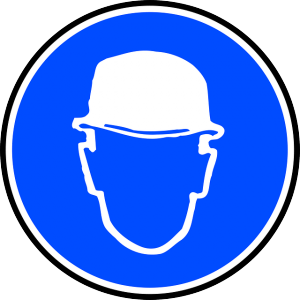 By Lionel Bailey, Office Depot
By Lionel Bailey, Office Depot
The most important consideration when evaluating health and safety protocol is that PPE should only be implemented as a last resort. All too often, procurement managers fall into the trap of automatically reordering existing protective equipment and issuing ‘worst case scenario’ PPE as standard.
Although this may be perceived as the most efficient safeguard in accident reduction, this is not necessarily the case. The first port of call for managerial staff should be a thorough and regular risk assessment of the working environment, which should then be re-evaluated following the installation of any new machinery, tools or working processes.
For more on PPE, read our PPE Regulation and Buyer’s Guide
Ideally, businesses should aim to adopt a ‘prevent then protect’ mentality, reducing the need for PPE by eliminating risk. For example, where workers are required to wear protective gloves or face masks in the handling of hazardous chemicals, efforts should be made to identify a non-toxic alternative, reducing the likelihood of injury or illness in the production process. Alternatively, if essential the use of such materials should be isolated to a remote or cordoned-off area of the workplace, thus significantly reducing the number of employees that come into contact with the potentially harmful substance.
Employee engagement is also vital in the promotion of best practice and can provide valuable insight into emerging hazards. In practice, workers should be provided with a clear reporting structure through which they can voice any concerns and provide feedback on the effectiveness of current equipment. This bottom-up communication structure should be utilised to encourage near-miss reporting, allowing health and safety managers to provide extra protection to prevent serious injury. In addition, a small group of workers may be selected to test new equipment before it is issued company-wide, allowing any associated limitations in comfort, mobility or productivity to be identified.
It is also the responsibility of the health and safety team to implement a comprehensive training scheme, educating employees as to how PPE should be correctly used, and in what capacity. For firms that employ a large contingent of agency staff, this often presents a larger challenge. Here it may be useful to incorporate a formal test as part of the recruitment process so that no workers are allowed on to the factory floor or on site without the required knowledge.
For larger companies, when selecting the right equipment and ensuring the safety of an often vast and diverse workforce, one size rarely fits all. Here, forming a strong relationship with key suppliers can be extremely helpful, as account managers can provide assistance in selecting products to fit the needs of individual employees. Staff comfort relies on sourcing uniform and equipment in a variety of sizes, catering to seasonal changes in temperature and weather conditions, as well as different job roles and shift patterns. Acknowledgement of these factors coupled with regular internal auditing and risk assessment is essential if the most effective PPE solution is to be selected.
Lionel Bailey is a health and safety specialist at business solutions provider Office Depot
The Safety Conversation Podcast: Listen now!
The Safety Conversation with SHP (previously the Safety and Health Podcast) aims to bring you the latest news, insights and legislation updates in the form of interviews, discussions and panel debates from leading figures within the profession.
Find us on Apple Podcasts, Spotify and Google Podcasts, subscribe and join the conversation today!


